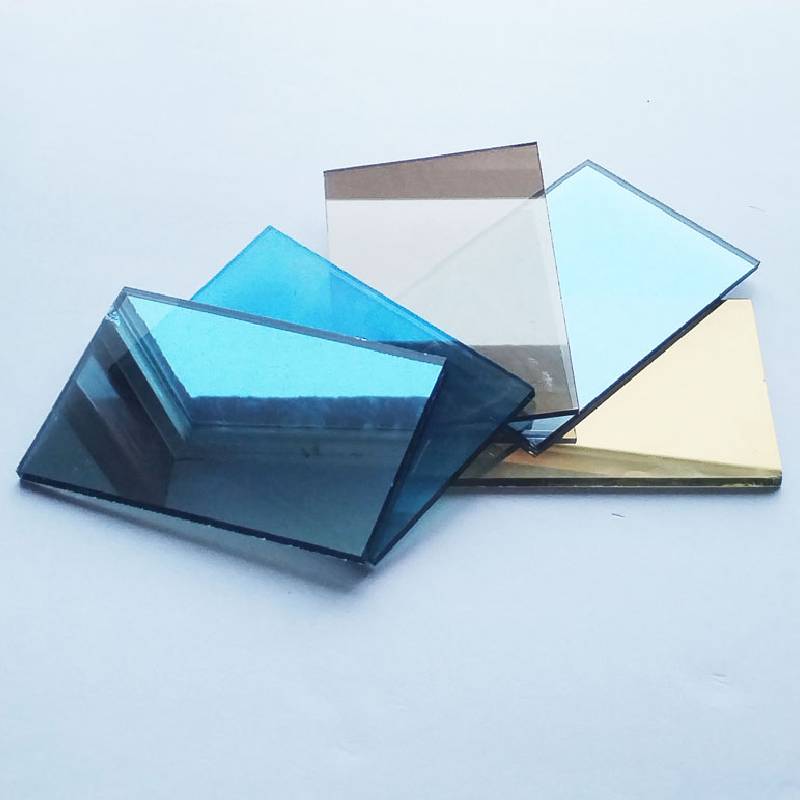Reflective Glass Architecture A Modern Marvel
In the rapidly evolving landscape of contemporary architecture, reflective glass has emerged as a defining material that encapsulates the essence of modern design. This innovative application of glass not only offers aesthetic appeal but also serves functional purposes, making it a staple in both commercial and residential buildings. As architects strive to create structures that harmonize with their surroundings, reflective glass architecture has become a powerful tool in achieving this vision.
Reflective glass, characterized by its ability to mirror the environment, creates a dynamic interplay between the building and its surroundings. This feature allows structures to blend seamlessly into varying landscapes, whether urban or natural. The shimmering surfaces of these buildings change throughout the day, reflecting the colors of the sky and the activities around them. This not only enhances the visual beauty of a structure but also encourages a sense of connection between the building and its environment.
One of the most significant advantages of reflective glass is its energy efficiency. Advanced glazing techniques allow for improved insulation and reduced heat gain, making buildings more sustainable. In a world increasingly focused on environmental conservation, architects are responding to the challenge by incorporating energy-efficient materials into their designs. Reflective glass plays a pivotal role in this pursuit, as it minimizes the need for artificial cooling, thereby reducing energy consumption and lowering carbon footprints.
Moreover, reflective glass architecture can enhance the user experience within buildings. By maximizing natural light penetration, these structures create bright and inviting spaces that promote well-being. The ability to filter sunlight reduces the reliance on artificial lighting, further contributing to energy efficiency. Additionally, the transparency and reflectivity of glass foster a feeling of openness and connection with the outside world, allowing occupants to enjoy panoramic views while remaining sheltered from the elements.
reflective glass architecture
However, there are certain considerations that architects must take into account when utilizing reflective glass. One potential drawback is the glare produced by sunlight reflecting off the surfaces, which can pose challenges for nearby buildings and pedestrians. To mitigate this, architects often strategically position reflective glass panels and use coatings that are designed to minimize glare while still allowing for optimal light transmission. Balancing aesthetics with functionality is crucial in this regard, as architects must ensure the comfort of both building occupants and members of the broader community.
In addition to its practical benefits, reflective glass architecture is a canvas for artistic expression. Iconic buildings around the world showcase the endless possibilities of this material. From the sleek, modern skyscrapers of urban centers to innovative public structures that redefine community spaces, reflective glass enhances architectural creativity. Architects can manipulate light, space, and reflection to create unique visual narratives that captivate and inspire.
As technology continues to evolve, the future of reflective glass architecture looks promising. Innovations in glass manufacturing and coating technologies are already paving the way for even more advanced solutions that prioritize sustainability, safety, and aesthetics. Architects are increasingly experimenting with smart glass, which can adjust its translucency and reflectivity based on environmental conditions, further enhancing the versatility of reflective glass in architectural design.
In conclusion, reflective glass architecture represents a compelling fusion of beauty and functionality. Its ability to reflect and interact with the surrounding environment makes it a powerful design element that enhances both individual buildings and the urban landscape as a whole. As architects continue to push the boundaries of creativity and sustainability, reflective glass will undoubtedly remain a key feature in shaping the future of modern architecture.
 Afrikaans
Afrikaans  Albanian
Albanian  Amharic
Amharic  Arabic
Arabic  Armenian
Armenian  Azerbaijani
Azerbaijani  Basque
Basque  Belarusian
Belarusian  Bengali
Bengali  Bosnian
Bosnian  Bulgarian
Bulgarian  Catalan
Catalan  Cebuano
Cebuano  Corsican
Corsican  Croatian
Croatian  Czech
Czech  Danish
Danish  Dutch
Dutch  English
English  Esperanto
Esperanto  Estonian
Estonian  Finnish
Finnish  French
French  Frisian
Frisian  Galician
Galician  Georgian
Georgian  German
German  Greek
Greek  Gujarati
Gujarati  Haitian Creole
Haitian Creole  hausa
hausa  hawaiian
hawaiian  Hebrew
Hebrew  Hindi
Hindi  Miao
Miao  Hungarian
Hungarian  Icelandic
Icelandic  igbo
igbo  Indonesian
Indonesian  irish
irish  Italian
Italian  Japanese
Japanese  Javanese
Javanese  Kannada
Kannada  kazakh
kazakh  Khmer
Khmer  Rwandese
Rwandese  Korean
Korean  Kurdish
Kurdish  Kyrgyz
Kyrgyz  Lao
Lao  Latin
Latin  Latvian
Latvian  Lithuanian
Lithuanian  Luxembourgish
Luxembourgish  Macedonian
Macedonian  Malgashi
Malgashi  Malay
Malay  Malayalam
Malayalam  Maltese
Maltese  Maori
Maori  Marathi
Marathi  Mongolian
Mongolian  Myanmar
Myanmar  Nepali
Nepali  Norwegian
Norwegian  Norwegian
Norwegian  Occitan
Occitan  Pashto
Pashto  Persian
Persian  Polish
Polish  Portuguese
Portuguese  Punjabi
Punjabi  Romanian
Romanian  Russian
Russian  Samoan
Samoan  Scottish Gaelic
Scottish Gaelic  Serbian
Serbian  Sesotho
Sesotho  Shona
Shona  Sindhi
Sindhi  Sinhala
Sinhala  Slovak
Slovak  Slovenian
Slovenian  Somali
Somali  Spanish
Spanish  Sundanese
Sundanese  Swahili
Swahili  Swedish
Swedish  Tagalog
Tagalog  Tajik
Tajik  Tamil
Tamil  Tatar
Tatar  Telugu
Telugu  Thai
Thai  Turkish
Turkish  Turkmen
Turkmen  Ukrainian
Ukrainian  Urdu
Urdu  Uighur
Uighur  Uzbek
Uzbek  Vietnamese
Vietnamese  Welsh
Welsh  Bantu
Bantu  Yiddish
Yiddish  Yoruba
Yoruba  Zulu
Zulu 

